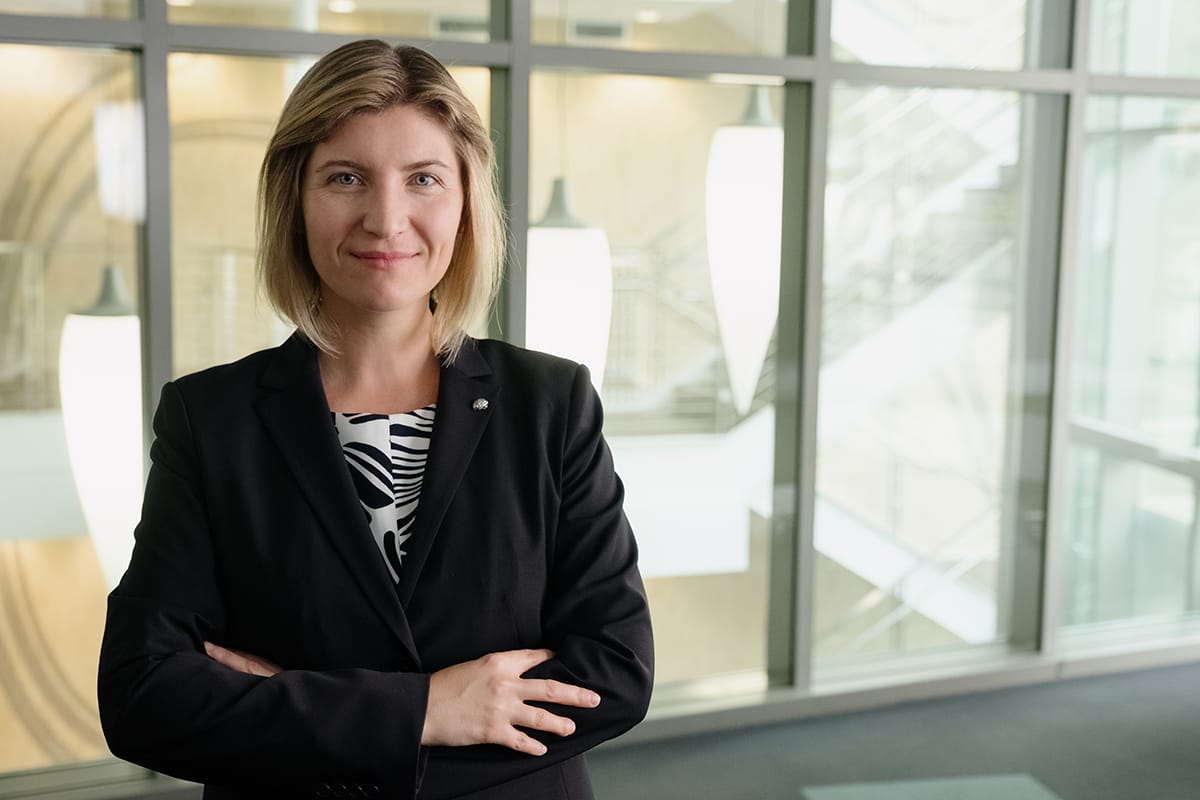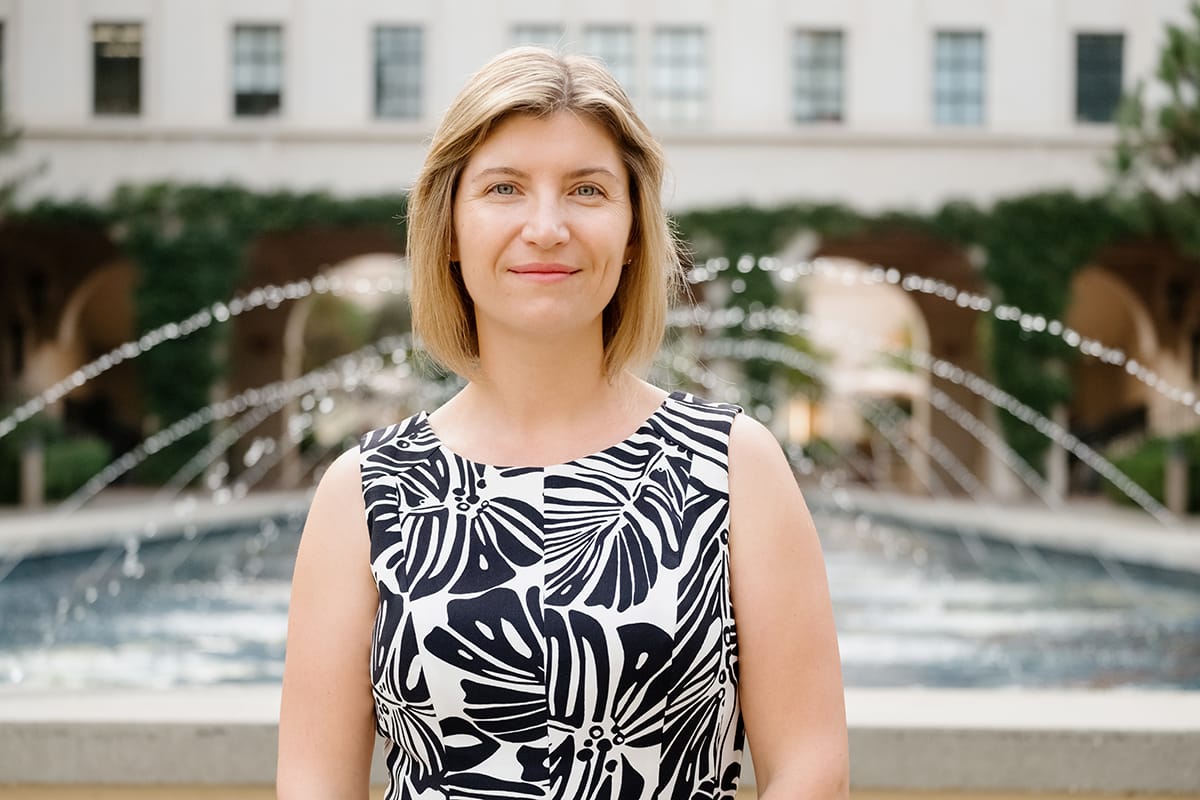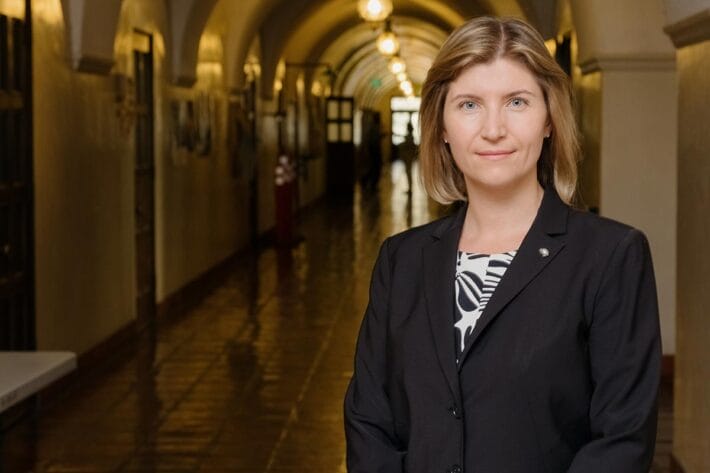
Viviana Gradinaru’s talent for straddling disciplines has earned her a spot among today’s preeminent young scientists. A professor of neuroscience and biological engineering at California Institute of Technology, she has developed ways to precisely control the activity of brain cells in living animals, explored the neuronal basis of deep brain stimulation for Parkinson’s disease, uncovered neural circuitry underlying sleep disturbances, and fashioned advanced vectors for gene therapy that could someday help treat human diseases.
Born to factory workers in Vaslui in northeastern Romania and raised in a farming community under a communist regime, Gradinaru developed an interest in engineering early on. She fastened on physics in high school and, thanks to a coveted fellowship, pursued undergraduate physics at the University of Bucharest. She then applied to move to the United States and was accepted to study physics at Caltech.
In 2005, Gradinaru began a doctorate at Stanford University with neuroscientist Karl Deisseroth and developed tools to probe the mechanism by which deep brain stimulation (DBS), a life-altering medical procedure for patients with Parkinson’s disease, confers therapeutic benefits. When she graduated with a PhD in 2010, she accepted an assistant professorship at Caltech, after a brief stint in the biotech startup world.
At Caltech, Gradinaru developed PARS-CLARITY, a crucial method that is today used by researchers worldwide in combination with microscopy and molecular imaging methods. “These tissue-clearing methods helped us visualize, among other things, long-range neuronal projections and pathways, which is a prerequisite for identifying and restoring lost or damaged connectivity in disease,” Gradinaru explains. “CLARITY has also expanded to other applications, such as monitoring microbial infections in animal models of diseases such as cystic fibrosis.”

Gradinaru says her future goal is to make noninvasive deep brain modulation for treating human neurodegenerative disorders a reality. The impressive pace and growing roster of her accomplishments suggest that the goal is within her grasp.
Awards and Accomplishments
- Blavatnik National Awards for Young Scientists – Life Sciences Finalist (2019)
- NIH Pioneer Award; Gill Center Transformative Award (2018)
- Vallee Scholar; Moore Inventor Fellow (2017)
- Early-Career Scientist Winner in the Innovators in Science Award in Neuroscience (2017)
- Eppendorf and Science Prize Finalist – essay published in Science (2017)
- PECASE: Presidential Early Career Awards for Scientists and Engineers (2016)
- Inaugural Peter Gruss Young Investigator Award (2016)
- Sloan Research Fellow; Heritage Principal Investigator (2015)
- Cell “40 Under 40” (2014)
- Pew Scholar Award (2013–2017)
- NIH Director’s New Innovator Award (2013–2018)
- World Economic Forum Young Scientist (2013)
- TEDxCaltech: The Brain on “Brain Control with Light – Development and Application” (2013)
- Kimmel Scholar Award for Cancer Research (2013–2015)
- Human Frontier Science Program (HFSP) Young Investigator Grant (2013–2016)
Jury Members
2020 Vilcek Prize for Creative Promise in Biomedical Science
Heran Darwin
Laurie Dempsey
Yibin Kang
Harmit S. Malik
Luciano Marraffini
Leslie Vosshall
Jedd Wolchok
Related Prize Recipients
Jeanne T. Paz

Polina Anikeeva

Sergiu P. Pasca

You may also be interested in
New research offers minimally invasive approach to deep brain stimulation

Visualizing optogenetics: New manga celebrates neuroscientist Viviana Gradinaru

Viviana Gradinaru: “Make Yourself Useful.”
